I am sure to get some grief about this piece given that my last article on the analoge Ricoh GR1s ended with my resolution that I was not interested in buying a digital GR. Well, that sentiment lasted about two weeks before I broke down and bought a Ricoh GRIII. And I’m glad I did. The digital Rioch GRIII remains remarkably faithful to its analog predecessors, while taking what makes the analog GR cameras so distinct to the next level, without compromise or gratuitousness of functionality. The GRIII is one of the best digital cameras I have ever used.

In this piece I discuss my experiences shooting the Ricoh GR1s and the Ricoh GRIII, what makes both the analog and digital GR cameras the same, and what makes them different. This is by no means a comprehensive review of the GRIII. There are myriad reviews all over the internet if you are inclined to read one—or otherwise watch one on YouTube if you prefer. You can also read another piece I wrote on shooting with the analog Ricoh GR1s while cycling in the countryside around Tsukuba City in Ibaraki Prefecture, Japan.
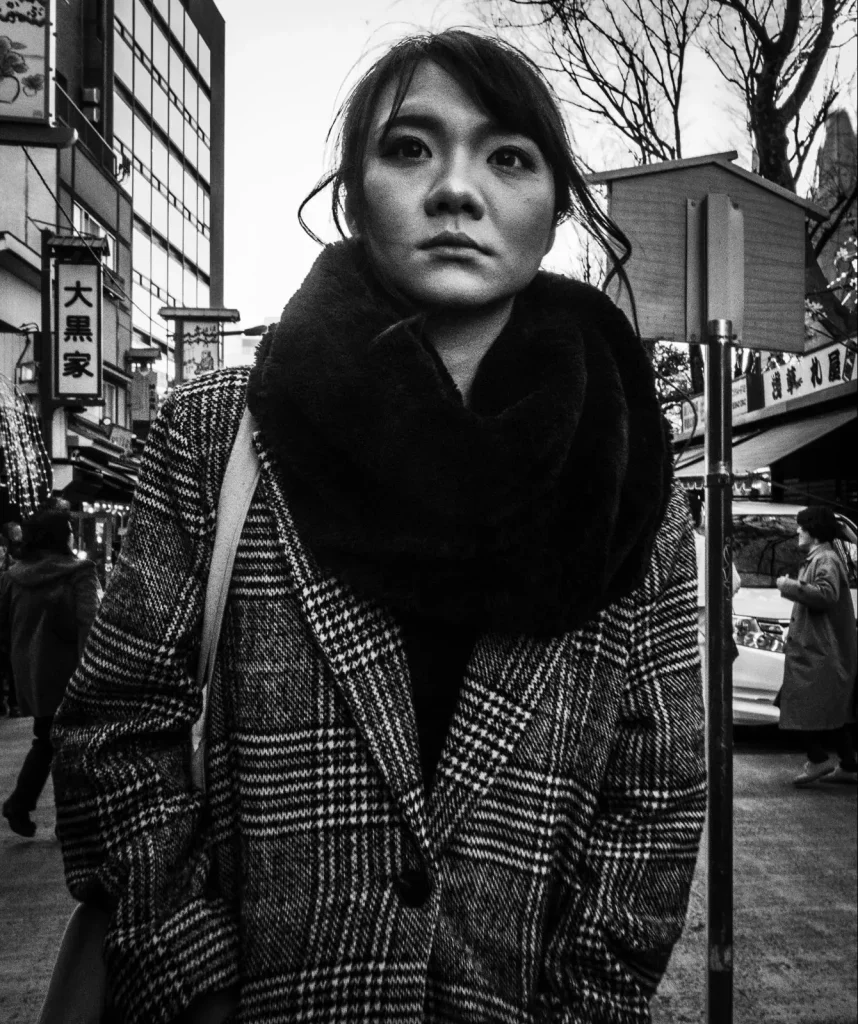
In the interest of full disclosure, let me say that I am a film agnostic. I shoot both digital and film cameras and I enjoy shooting each type for what each has to offer. So you will get from me no self-serving, sanctimonious declarations about shooting film, nor any snide mockery of film-shooting luddites. Either would be hypocrisy.
So with that out of the way, why shoot a Ricoh GR of any model at all, whether digital or analog?
It is the work of one of Japan’s most celebrated street photographers, Daido Moriyama, that put the analog Ricoh GR models on my radar some years back, as Moriyama shot some of his most iconic work with one in the 1990s. Of course, it is not the GR that makes Moriyama’s work—well—work. After all, Moriyama has shot with different kinds of cameras throughout his career, including digital ones later on, albeit always compact cameras, and has consistently produced great images. So don’t kid yourself into thinking a Ricoh GR will turn you into a Daido Moriyama. It won’t, but it just might help you bring out your best artistic self as long as you have to resolve to put in the effort to do so, while having some fun in the process! Naturally, the same can be said of any camera—even the smartphone you have in your pocket as you read this.

Ken Rockwell once wrote that he did not get the point of the Ricoh GR, in reference to a digital one. While the analog GR models all have viewfinders, which are remarkably good considering their size, the digital GR cameras have only an LCD screen on the back, which Rockwell observes as not much better than shooting with his iPhone. And he is probably right—at least for the kind of photography Ken Rockwell would use such cameras for. Yet it is in street photography where the GR excels. Without discounting Ken Rockwell’s excellent work and photographic prowess, street photography has never really been Ken Rockwell’s thing. And that’s fine.

Street photography is however my thing, and the Ricoh GR cameras have an almost cult-like following among certain street photographers. Yet to say that the GR cameras are the best camera for street photography, as many claim, is somewhat disingenuous. After all, any camera is arguably ideal for street photography. It all depends on your priorities and how you want to use it. Dave Powell of Shoot Tokyo writes in 2014 about how observing celebrated photographer Jay Maisel in Tokyo shooting with a beastly Nikon D3S, hardly the paragon of a discreet street camera, convinced him to give a Canon DSLR a go rather than his go-to standard Leica M9. Superlative Kyoto-based photographer Sean Lotman swears by his Nikon F2, F3, and FM3A analog SLRs, and has the most distinct approach to using slide film as a medium I have ever seen. When I met outstanding South Korea based photographer Josh White late last year, he was shooting with a FujiFilm XT-3, and he has shot his share of cameras in the street including Leica M cameras, both digital and analog, Fujifilm, and yes, even a Ricoh GR model. You name any camera ever invented, and I guarantee you someone somewhere has used it for street photography and swears by it—and might even be shooting with it in the street right now as you read this.

So in my view it becomes absurd to claim that the GR is the ever-elusive, putative ideal street shooter. However the GR does seem to be ideally designed for rapid opportunism in street photography. They are made for getting up close and personal without being intrusive, and capturing candid moments of people from a distance that most would consider an invasion of personal space—that is assuming they even noticed you there at all—while putting a minimum burden on the photographer who carries a GR around. Now if that sounds appealing to you, read on.

What do the Analog and Digital GR Models Have in Common?
Ricoh GR cameras, whether analog or digital are remarkably similar. The first analog GR1 was released in 1996. Subsequent analog models include the GR1s, the GR1v, the GR21, and 800
the GR10. Ricoh targeted professional photographers with GR analog cameras at a premium price, with the exception of the consumer-grade GR10.
The first GR digital camera, the GRD, was released in 2005, which has been followed by GRD models II, III, and IV. Subsequent models were branded simply “GR”, beginning with the release of the Ricoh GR in 2013 followed by GR models II and today’s current III.

The GR cameras, whether analog or digital, are so small as to go almost entirely unnoticed when shooting as long you don’t raise the camera to your eye in front of your face, and you don’t really need to do that if you don’t want to. The GRs are all designed to shoot from the hip if you so choose, and to shoot up close and personal with your subjects. Analog GR cameras all boast a superb fixed 28mm full frame lens, with the exception of the GR21 which as you might suspect has a 21mm lens. The digital GR cameras all sport a 28mm equivalent for a crop sensor. A 28mm focal length makes shooting from proximity without explicitly framing your shot with a viewfinder relatively straightforward as long as you learn to see the world in 28mm with your own eyes. With some practice, that’s not so hard to do.
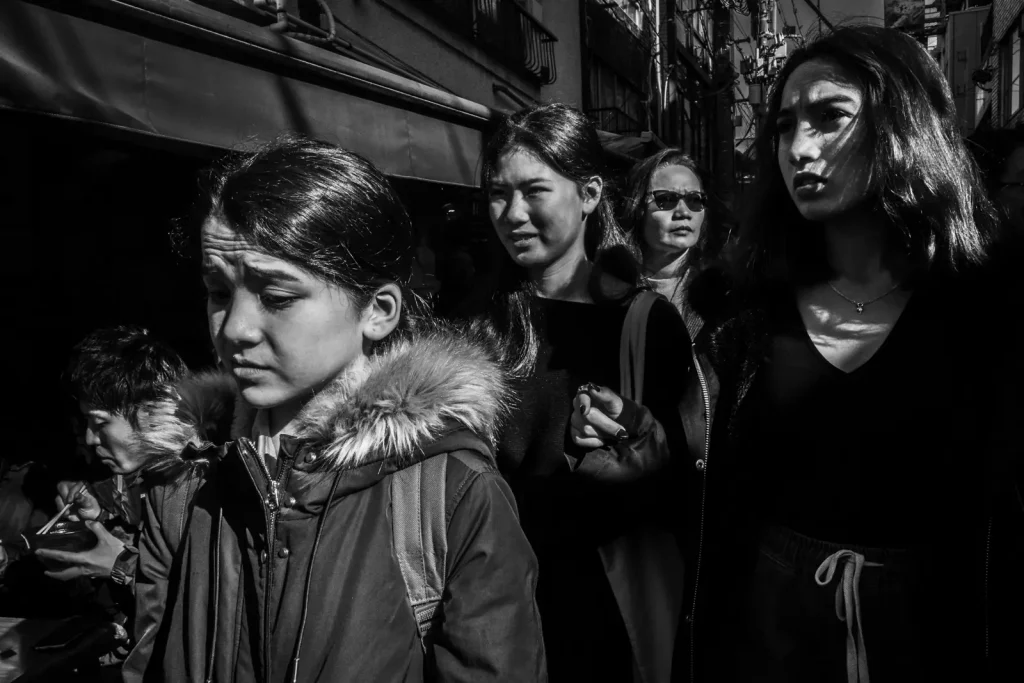
All of the GR models ergonomically are virtually identical. The GR models are all light, thin, and maybe about the size of your palm. All are designed to be able to shoot with one hand—the right hand, in case you weren’t sure. A GR of any model fit into a trouser or jacket pocket easily, and unless you are into exceedingly tight denim, the pocket of your jeans will likely accommodate.
All the GRs autofocus, and while some models might be a bit faster than others, there is always an inevitable lag. In street photography, a lag of even half-second can mean the difference between a great shot with your subject in the frame, or puzzling shot of a background in front of which your subject had been just an instant before walking out of your frame.
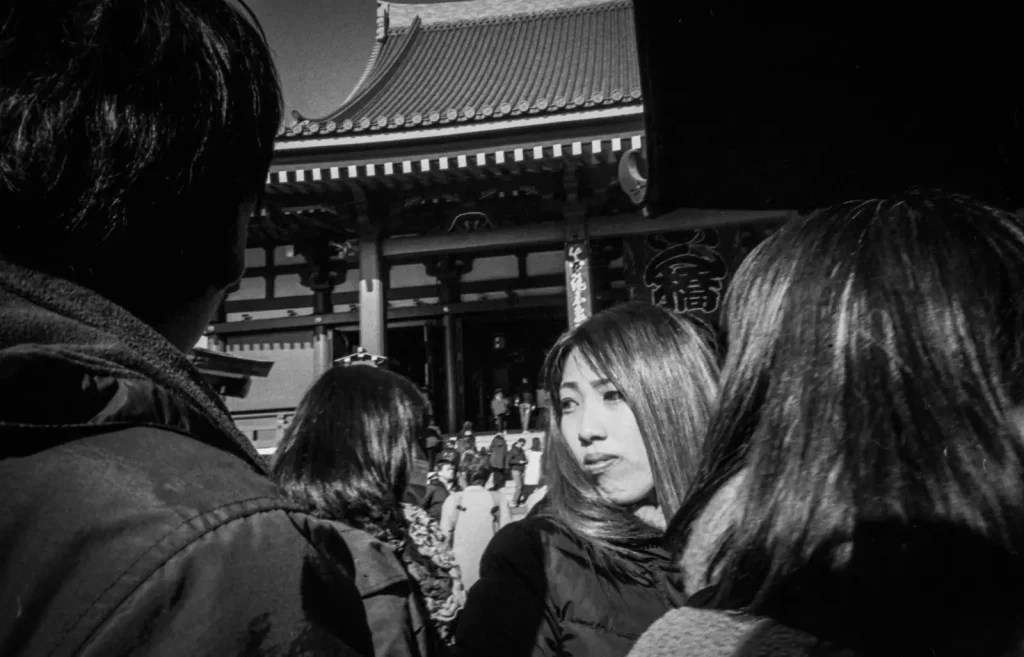
Like I mentioned above, all GR models have been designed for rapid opportunism on the fly. As such, since the inception of the first analog GR1, every GR camera, whether digital or analog, has a “snap” focus mode to eliminate auto-focus lag. Snap mode allows you to fix the focal distance so you can zone focus instead or relying on autofocus. Anyone who has become adept with a manual camera in street photography like the Leica M3 knows that zone focusing is lightning fast, and trumps autofocus every time. For the GR cameras, two meter snap focus is standard on all models. However, some models allow for other distances like one meter, one-and-a-half, and hyper-focal distance at infinity on the digital models or landscape mode on the analog GRs.

The analog GR1s allows you to fix snap focus on some point, so if you wanted say to fix the focus distance at about seventy centimeters, walk up to a wall, stick your arm out and touch it, autofocus the camera, and fix the snap focus. It might not be exact, but you will at least know that you have set the focal distance to about your own arm’s length. The GRIII allows for a manual setting for snap focus using a dial so you can choose whatever focal distance you want other than the standard ones. I imagine that the other models have similar features, but don’t know the specifics. If you happen to know which model has which snap features, feel free to share in the comments.

So what makes the experience shooting the digital GRIII distinct from the Analog GR1s?
Beyond the obvious differences, like the noise that the film advance motor of the GR1s makes after every shot, the fixed ISO setting for the meter when shooting film, and the more narrow depth of field of a full-frame analog camera compared with the greater DOF of a cop-sensor equivalent lens, the digital GRIII allows complete manual control when you want it. The analog GR1s limits you to either fully automatic shutter speed and aperture in P mode or otherwise aperture priority with a dial to set the aperture. There is no control over shutter speed. The other analog GR models are presumably the same, but if you know differently, please comment.

You can of course set the GIII to fully automatic, and you can also set it for aperture priority, shutter speed priority, and one of my personal favorite modes—shutter speed/aperture priority and automatic ISO. The latter is an excellent mode when you want to maximize your depth of field stopping down with no compromise either faster or slower with shutter speed. Given that the GRIII max ISO is 12800, that gives you a lot of latitude for depth of field in the street, even on an overcast day. Once again, depth of field for any lens on a crop-sensor camera is significantly greater than its full frame equivalent. Incidentally, the analog GR lenses stop down to f/22 whereas the digital GR lenses stop down only to f/16. Both analog and digital GR lenses open no wider than f/2.8, with the exception of the GRD models which open to f/1.9.

Not having control over shutter speed with the analog GR1s is one of my biggest gripes with the camera. Also, the max shutter speed on the GR1s is only 1/500th, which is OK but still a bit slow. I assume the other analog models are the same. Particularly since the GR1s is so small and light, camera shake can be an issue when moving about on the street. The GRIII shutter speed however maxes out at 1/4000th, plenty fast to freeze motion, and also has an image stabilization option if you want to use it—a new feature that the previous digital models did not have.

In addition, the GRIII offers a manual focus option which is absent on the GR1s and I assume all the analog GR cameras. At best you can fix the focus for “landscape,” which is presumably the hyper-focal length at infinity. I really like having manual focus control because it allows me to more easily zone focus, and adjust on the fly.
Not only that, but the GRIII LCD screen displays a depth of field scale both in manual and snap focus modes. That’s a nice touch, given that zone focusing is so inherent to all the GR models. The Ricoh GRIII DOF scale is realistic and practical to give you a reasonable range meaningful to the human as opposed to the pointlessly narrow, theoretical depth of field scale on the Fujifilm X100, X100s, and X100T models, that seem designed only to satisfy the exigences of a mathematician, a lens optics engineer, or a pixel-peeping hobbyist. There are no depth of field scales on the analog GR models, nor any indicator of focal distance.

Like most digital cameras, the GRIII has several automatic exposure settings. One that I really like however that I have not seen on other digital cameras is a highlight-weighted exposure option. This is a wonderful feature to help capture dramatic high contrast scenes in monochrome when shooting in urban spaces on a bright day amid heavy shadows and harsh light. Typically, I would control with manual exposure. However, the highlight-weighted exposure is nice to have.

At the same time, the GRIII is missing some features present on the GR1s, and even on some of the previous digital models.
For starters, the GRIII has no built-in flash. That’s not too much of a big deal, but I like having the option for a fill-flash on the GR1s, and apparently the Ricoh GRII digital predecessor to the GRIII also has a built-in flash. I don’t know what prompted Ricoh to abandon the flash with the GRIII, whether a compromise for adding image stabilization, or simply just a way of cutting costs. I miss the flash on the GRIII because I do use it on the GR1s.

And then there is the lack of a viewfinder on all the digital GR models. While I shoot from the hip with the GR1s, I also like using the viewfinder for framing and pinpointing focus. Not having a viewfinder on a digital camera as small as the digital GR cameras, whether electronic or optical, is understandable. However, providing one is not likely impossible. The Lumix DMC LF1 and its Leica doppelgänger, the Leica C, are both smaller than the GR digital cameras, and have an electronic viewfinder. And these cameras were released in 2013! You can of course attach an external analog 28mm viewfinder to the flash mount, and I have done so, but such an appendage on an otherwise sleek GR body seems to undo the grace of the camera.

Having the LCD screen for framing is just OK. It is still somewhat hard to see in daylight. Also, as I age, it is becoming increasingly harder for me to focus on the LCD. For framing, I can make out the basics of a scene, and usually that is good enough, but still, the finder of the GR1s is vastly superior and less taxing on the eyes.

Yet what is lacking on the GRIII compared to the GR1s is minor in my view. Ricoh has been remarkably faithful to its philosophy from the days of its analog GR cameras to today’s digital GR models. As I noted previously, to me at least, the GR1s is designed to maximize opportunism in moment. The GRIII takes that same philosophy to a higher level, adding the kind of functionality that new technology offers—all without compromising the distinct ergonomic design and foundational features like snap focus. While the GRIII has greater functionality and features to be sure, they are not gratuitous. For example, Ricoh kept the fixed 28mm prime focal length, even though it was likely possible to add a zoom capability to match other competing compact cameras.

The only other manufacturer I know that has remained so faithful with its digital models to its analog antecedents is perhaps Leica, with its M cameras. Even so, Leica compromised on size and egonomics, with the digital M9 and then the ever further with the bloated M240 and its variants. The M240, weighs even more than the ungainly M5, the heaviest of the analog M cameras. Leica had even added a gratuitous movie feature on the M240 until later abandoning video on subsequent models. The most recent Leica M10, ergonomically at least, is now most similar to the analog M7, but still nothing close to svelte analog Leica M6. Yet Leica had to increase the protruding distance of the M10’s M-mount bezel to do that. So the Leica M10 is the first Leica M camera since the Leica M3 released in 1954, that cannot take the made-for-the-M3 35mm lenses with goggles and still frame correctly—a rather un-Leica-like compromise. All other M cameras from the M3 through to the M240 can. In addition, Ricoh has also for the most part thankfully avoided the garish, premium “special edition” models targeting fashionista over photographers as Leica now does so frequently and shamelessly with its Leica M cameras.
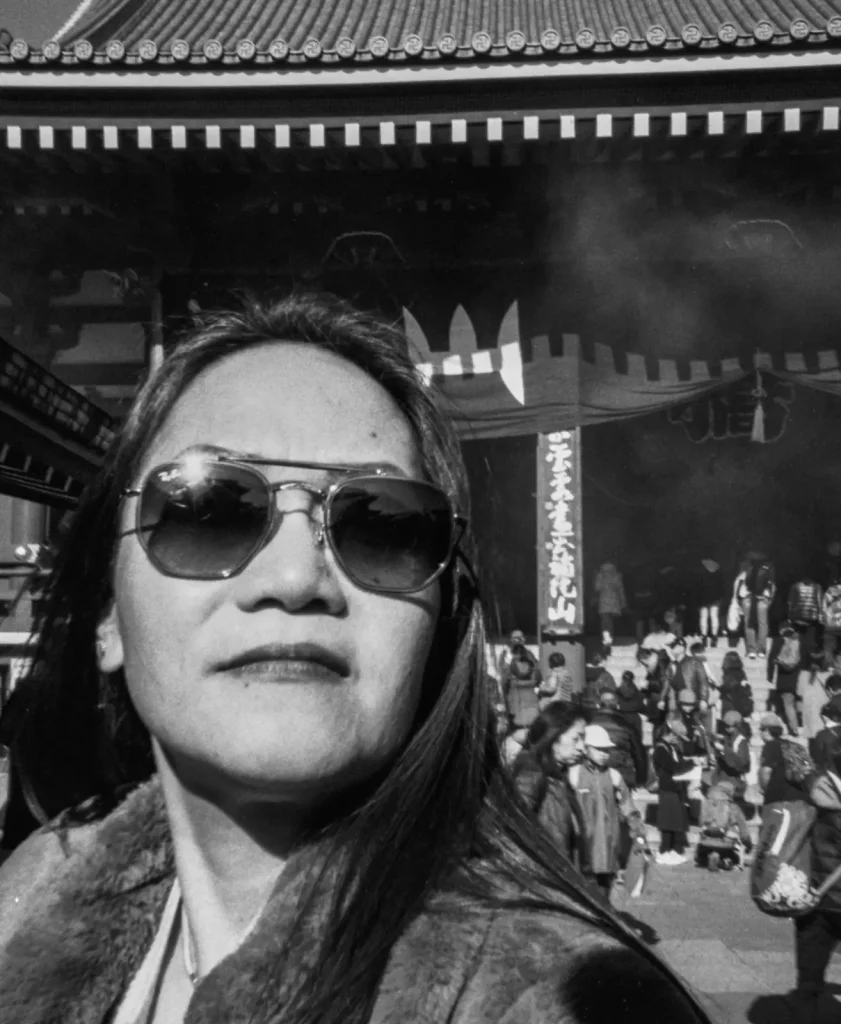
Unlike Leica, Ricoh has remained faithful to its roots, so much so that my experience shooting the digital GRIII is not that different from shooting with the analog GR1s, but rather augmented in ways that make sense in line with the philosophy that made the analog GRs so great. Whether analog or digital, the GR cameras all excel at the same kind of up-close and personal, rapid opportunism in street photography, without intruding upon your subjects when you prefer discretion, nor encumbering you, as you negotiate your way through streets and crowds.
So if such street photography is the kind that appeals to you, consider a Ricoh GR. Which should you get? An analog or digital GR? It does not matter, but consider that the days of any analog GR are numbered. They are no longer reparable, so when the camera dies, it’s game over. If you can live with that and want an analog GR, get one. If you can’t, better to go for a digital GR.
Or otherwise you can take it from a film agnostic like me who has become a Ricoh GR convert, and get one of each! That’s what I did.
I took all the photographs in this piece in the Tokyo neighborhoods of Asakusa, Tsukiji, and Harajuku with a Ricoh GRIII and a Ricoh GR1s. I used both Kodak T-Max 100 and T-Max 400 film, both shot at EI800. I push processed with Kodak T-Max Developer.
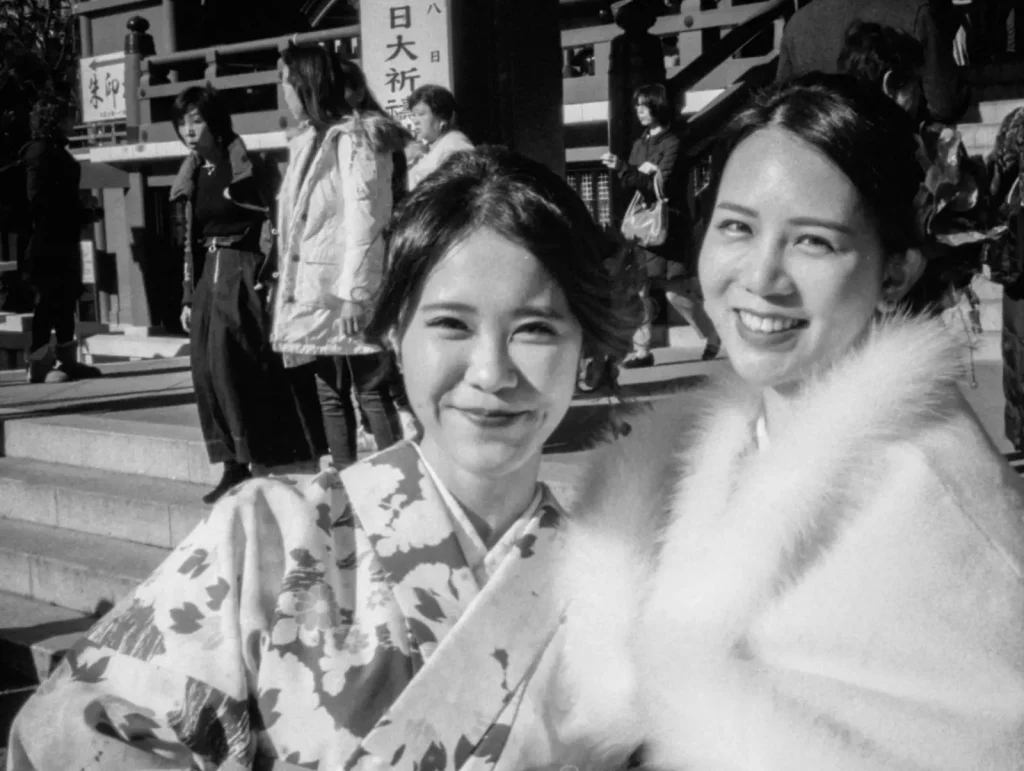
I am a street photographer who lives in Japan. If you would like to see more of my work, have a look at my website bleisteinphoto.com, or my Instagram @sbleistein
Share this post:
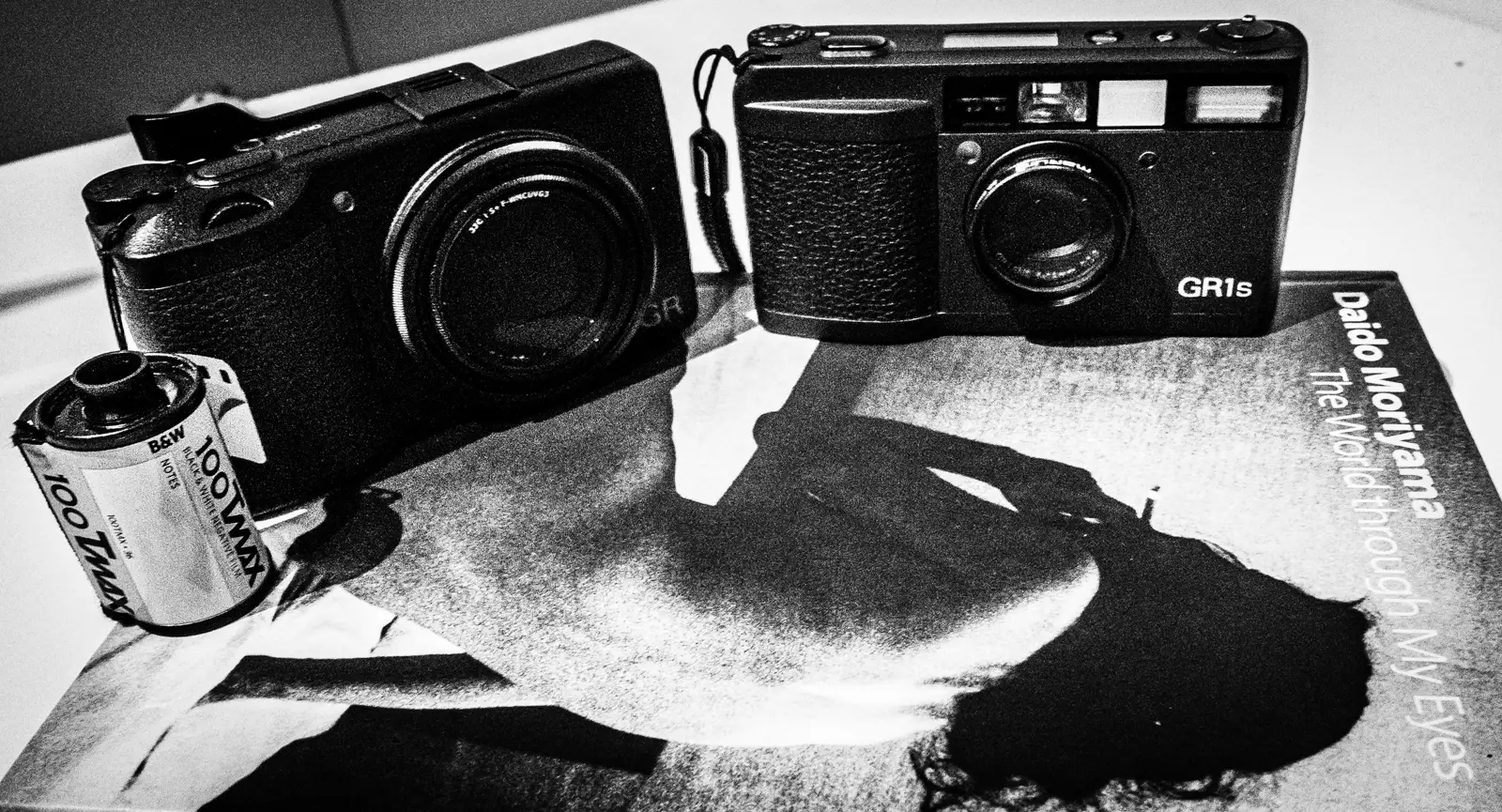








Comments
theo vervloet on Ricoh GRIII and GR1s Experience Comparison by a Film Agnostic – By Steven Bleistein
Comment posted: 18/02/2020
I AM A AMATEUR PICTURE TAKER AND HAVE GATHERED SOME CAMERS OVER THE YEARS. BUT THE MOST CONVENIENT I HAD WERE THE RICOH GR1 AND GR1S. I LIKED A LOT YOUR TWO PUBLICATIONS ON 35MM.
VERY NICE PICTURES AND ALSO THANKS FOR GIVING ALL THOSE TIPS AND "NAMES" ABOUT STREET PHOTOGRAPHY
Comment posted: 18/02/2020
Ricoh GRIII and GR1s Experience Comparison by a Film Agnostic – By Steven Bleistein – 35mmc – The Click on Ricoh GRIII and GR1s Experience Comparison by a Film Agnostic – By Steven Bleistein
Comment posted: 18/02/2020
Ron Scibilia on Ricoh GRIII and GR1s Experience Comparison by a Film Agnostic – By Steven Bleistein
Comment posted: 18/02/2020
Comment posted: 18/02/2020
Comment posted: 18/02/2020
Comment posted: 18/02/2020
Eric on Ricoh GRIII and GR1s Experience Comparison by a Film Agnostic – By Steven Bleistein
Comment posted: 19/02/2020
Comment posted: 19/02/2020
V. on Ricoh GRIII and GR1s Experience Comparison by a Film Agnostic – By Steven Bleistein
Comment posted: 19/02/2020
Comment posted: 19/02/2020
Paul alexander on Ricoh GRIII and GR1s Experience Comparison by a Film Agnostic – By Steven Bleistein
Comment posted: 07/03/2020
Comment posted: 07/03/2020